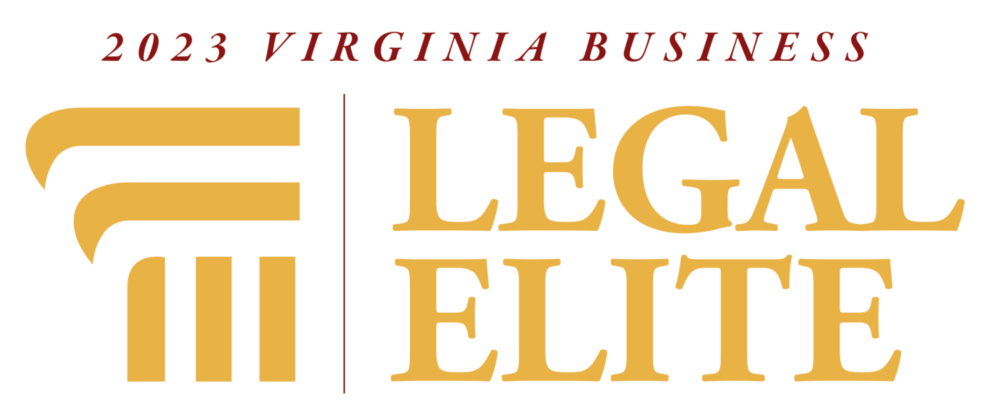What Do Virginia Fortune 1000 Companies All Have in Common?
Did you know that Virginia is home to nearly 300 of the nation’s fastest-growing, privately-held companies? While Amazon’s HQ2 might be the most recent, are you surprised that 35 Fortune 1000 companies chose to have a headquarters in Virginia?
Thanks to the commonwealth’s commitment to emerging technologies (e.g., VA leads the country’s data center market), Virginia has the second highest concentration of high tech workers in the U.S. Even Virginia’s location makes it a strategic East Coast hub for manufacturing and supply chain management, while being central in the Mid-Atlantic’s life sciences cluster provides internationally recognized R&D facilities unparalleled access to key federal agencies.
Impressive, and this only scratches the surface. However, these companies have more than Virginia in common. It should come as no surprise that nearly all these companies rely on patents to protect their technology and innovation.
Demystify the Patent Process with These Top 5 Tips:
- No Need to Always Re-invent the Wheel: Not every invention has to be as groundbreaking as the original iPhone. In fact, most patents are improvements on earlier inventions.
- Working Out the Details? No Problem!: There is no need to have a working model. As long as the inventor can sufficiently describe the invention, you can apply for a patent.
- Leverage Your Patent as a Business Asset: If the idea is new, non-obvious, and not merely an abstract idea, it can be patented. If the idea provides a commercial advantage, the patent gives the patent holder the exclusive rights to the invention in the U.S., which is a very powerful business tool.
- Once You Patent, It’s Yours: The patent rights flow first from the government to the inventor. Then, only if the inventor executes a contract (e.g., employment contract with appropriate terms) do the patent rights transfer from the inventor to the company.
- Leave the Application to the Experts: Rely on patent attorneys to help draft the patent application – the most important information from the inventor is what the invention is and how it works.
How Policy Encourages Patents & Innovation
While Virginia pushes innovation based on things like its strategic location, livability and top-ranked higher education system, the U.S. has been promoting innovation through the patent system since its formation in the constitution.
Maybe you have heard that the patent system promotes innovation, but there are policy-based rationales to support this idea.
- Incentive to Invent: A patent is granted to encourage invention. Under this theory, the original inventor will not be able to recover the costs of the invention, including risks, unless they are ensured an exclusive right on the product of their inventive efforts.
- Incentive to Disclose: Here, the patent system discourages secrecy. Secrecy is often not a viable alternative for patent protection, especially if the invention can easily be reverse engineered.
- Incentive to Commercialize: The patent system awards publicly announced, exclusive ownership shortly after discovery. This allows investors to invest accordingly. Practically, the patent provides a signal where competitors are warned not to invest in making the same patented product.
- Incentive to Design Around: The patent provides clear boundaries. In other words, to borrow from property law, “fences make good neighbors.”
These public policy incentives can be boiled down to advantageous business incentives. In general, patents can protect investments. For example, R&D can require significant cost and time, and without the exclusive right provided by a patent, a competitor could cut costs on the same product because they do not have to recoup the R&D investment.
Why Patent Procurement is Important
Patent protection can allow a competitive advantage to be preserved. The patents themselves also have value including a property value and a licensing value. From a marketing perspective, patents can show your clients and customers that you are an innovative leader in the industry.
To understand the drawbacks of not getting a patent, simply reverse the business incentives:
- Lose Competitive Advantage: Someone else might file a patent and exclude you from the market entirely
- Lose Money Spent on Development: Companies can use scale to drive down the price and/or sell at lower prices because they don’t have to recoup research and development costs)
- Lose the Opportunity to Create Revenue through Licensing
Take the Easy Next Steps to Patent Procurement
Now that you are convinced you should get a patent, the process is easy. Work with a patent attorney to file a patent application with the United States Patent and Trademark Office (USPTO). After filing, a patent examiner at the USPTO will review the case.
The patent examiner’s job is to make sure the invention is new and non-obvious, and the examiners often point to existing patents and publications in an attempt to show that your invention is not new and non-obvious.
It’s not that the patent examiners don’t want you to get a patent (Most of them actually DO want you to get a patent), they just want to make sure that your invention is actually new, which makes for a strong patent, which adds to the public policy incentives discussed earlier.
This back and forth with the examiner is where you can rely on your patent attorney to negotiate with the examiner, and finding a patent attorney that has good relationships with the patent examiners, their supervisors, and the decision makers at the USPTO can help expedite the process.
After negotiating with the examiner, you end up with a set of allowable claims that define the metes and bounds of your invention, and shortly after agreeing on the allowable claims, your patent issues.
Congrats! You are on your way to being the next Fortune 1000 company headquartered in Virginia.
Do you need help getting your business on the right track for patent procurement?
About Xsensus
Xsensus is reinventing the way an intellectual property law firm works by investing in the brightest minds and the latest technology to streamline their processes, while delivering creative and innovative solutions for their clients.









